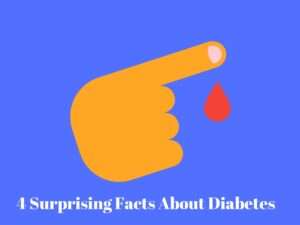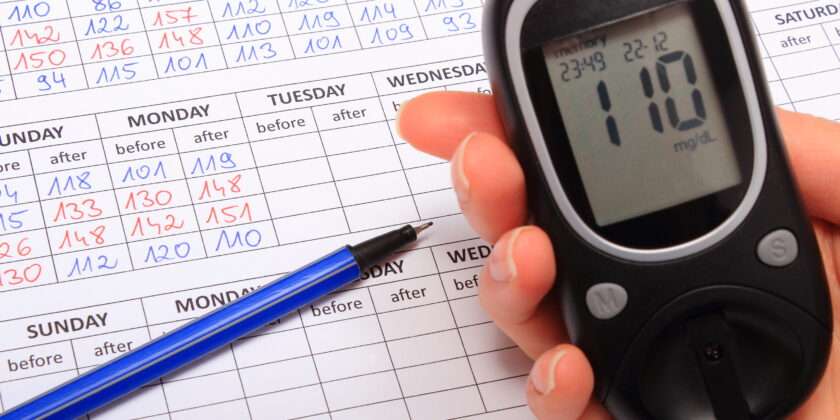MedlinePlus say that diabetes1 is a disease in which your blood glucose, or blood sugar, levels are too high. Glucose comes from the foods you eat. Insulin is a hormone that helps the glucose get into your cells to give them energy. With type 1 diabetes, your body does not make insulin. With type 2 diabetes, the more common type, your body does not make or use insulin well. Without enough insulin, the glucose stays in your blood. You can also have prediabetes. This means that your blood sugar is higher than normal but not high enough to be called diabetes. Having prediabetes puts you at greater risk of getting type 2 diabetes.
Testing for Diabetes2
Your doctor will have you take one or more of the following blood tests to confirm the diagnosis:
A1C Test
This measures your average blood sugar level over the past 2 or 3 months. An A1C below 5.7% is normal, between 5.7 and 6.4% indicates you have prediabetes, and 6.5% or higher indicates you have diabetes.
Fasting Blood Sugar Test
This measures your blood sugar after an overnight fast (not eating). A fasting blood sugar level of 99 mg/dL or lower is normal, 100 to 125 mg/dL indicates you have prediabetes, and 126 mg/dL or higher indicates you have diabetes.
Glucose Tolerance Test
This measures your blood sugar before and after you drink a liquid that contains glucose. You’ll fast (not eat) overnight before the test and have your blood drawn to determine your fasting blood sugar level. Then you’ll drink the liquid and have your blood sugar level checked 1 hour, 2 hours, and possibly 3 hours afterward. At 2 hours, a blood sugar level of 140 mg/dL or lower is considered normal, 140 to 199 mg/dL indicates you have prediabetes, and 200 mg/dL or higher indicates you have diabetes.
Random Blood Sugar Test

African Americans are almost twice as likely to be diagnosed with diabetes as non-Hispanic whites3 according to data from the Office of Minority Health (OMH). In addition, they are more likely to suffer complications from diabetes, such as end-stage renal disease and lower extremity amputations. Although African Americans have the same or lower rate of high cholesterol as their non-Hispanic white counterparts, they are more likely to have high blood pressure.
- African American adults are 80 percent more likely than non-Hispanic white adults to have been diagnosed with diabetes by a physician.
- In 2010, non-Hispanic blacks were 4.2 times more likely to be diagnosed with end stage renal disease as compared to non-Hispanic whites.
- In 2012, non-Hispanic blacks were 3.5 times more likely to be hospitalized for lower limb amputations as compared to non-Hispanic whites.
- In 2013, African Americans were twice as likely as non-Hispanic Whites to die from diabetes.
Jay Harold has written extensively about the impact of diabetes on the minority community. Heart, eye, foot, and skin problems are common complications of diabetes. Learn more by reading “Fighting for Your Health: Diabetes’ Deadly Impact on Minorities.”
Monitoring your Blood Glucose level4
Using a glucose meter to check and monitor blood sugar is a daily part of life for millions of Americans with diabetes.
Glucose meters and test strips are medical devices regulated by the U.S. Food and Drug Administration. And the FDA wants to make sure you use these devices safely. Read on for advice.
Beware of Buying Previously Owned Test Strips
The FDA is aware that some sellers are marketing pre-owned or second-hand test strips to consumers. These are unused test strips previously owned by someone else.
These pre-owned strips may be sold at lower prices when compared to new strips. For instance, you may see flyers advertising cheap test strips in your neighborhood, or you may see sellers marketing cheap test strips online.
It is technically legal for people to resell their test strips. But the FDA does not recommend that you buy pre-owned test strips or that you resell your unused strips.
That’s because pre-owned strips can give incorrect results—and may not be safe to use with your device.
Here’s why:
- Test strips should be properly stored to give accurate results. If you buy pre-owned strips, it is hard to know whether the strips were stored properly. Test strips also could be expired. A lack of proper storage or using expired strips could put you at risk for getting incorrect results from your glucose meter. And false results can put you at risk for serious health complications—and even death.
- Test strip vials that have been opened by another person may have small amounts of blood on them, which can put you at risk for infection.
- Pre-owned test strip vials may have been tampered with, which means that they may not be safe to use. (For instance, the expiration dates might have been changed or covered up.)

- Pre-owned strips also may not have been cleared by the FDA for sale in the United States. (If instructions aren’t in English or the strips look different than other strips of the same brand, this can be a sign of unsafe strips.)
The bottom line? The FDA recommends that you buy unopened vials of glucose test strips designed for your meter—and that you do not buy pre-owned test strips.
Talk to your health care provider if you are not sure where to buy test strips for your glucose meter or if you cannot afford to buy the test strips recommended for use with your meter.
7 More Safety Considerations for Glucose Meters and Test Strips
You may be a pro at testing your blood sugar levels. But consider these safety reminders.
Follow instructions carefully. Glucose meters and test strips are sold with instructions for use. You can call the manufacturer of your device or your health care provider if you have questions.
Ask your health care provider to watch you test yourself. He or she can tell you if you are using your device correctly.
Do quality control checks of your device. Regularly test your meter using a control solution to make sure the test strips and meter are working properly together. (Read the meter’s instructions for use to see how often you should test it.)
Understand what the meter display means. Be sure you know how high and low glucose values are displayed on your meter. Sometim
Know which test site gives the most accurate results. Readings from other areas of your body may not be as correct as fingertip readings.
- Readings from alternate sites—such as your forearm or palm—can be less accurate than fingertip readings when your glucose levels change quickly (like after you eat or during exercise).
- Take a reading from a fingertip if you think your blood glucose is low, if you don’t normally have symptoms when your blood glucose is low, or if results from an alternate test site don’t match how you feel.
Know when and how to clean and disinfect your glucose meter. Cleaning and disinfection instructions can vary, so always read and follow the directions in your manual.
Know when to report device problems. In an emergency, call 9-1-1. For non-emergencies, the FDA encourages you to report any issues to MedWatch5 , the FDA’s voluntary reporting program. (Problems may include devices that don’t work, suspected incorrect results, or any other problem with your meter or test strips.)
Jay Harold knows that test strips and monitors can be expensive. They are essential tools to monitor your blood glucose levels if you have diabetes. Remember that 13.4% of Black Americans over 18 years of age have diabetes.
Enjoyed this post? Share it and read more here. Jay Harold has put together a Resource page that you may find useful when trying to improve your health and wealth. Please take this advice of Muhammad Ali and give back to others. “Service to others is the rent you pay for your room here on earth.”
Bibliography
- https://vsearch.nlm.nih.gov/vivisimo/cgi-bin/query-meta?v%3Aproject=medlineplus&v%3Asources=medlineplus-bundle&query=diabetes&_ga=2.119518849.969855030.1504511182-911183644.1497879085
- https://www.cdc.gov/diabetes/basics/getting-tested.html
- https://minorityhealth.hhs.gov/omh/browse.aspx?lvl=4&lvlid=18
- https://www.fda.gov/forconsumers/consumerupdates/ucm049051.htm
- https://www.fda.gov/safety/medwatch/




